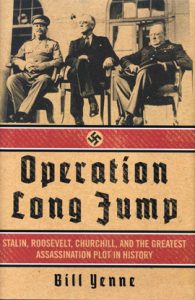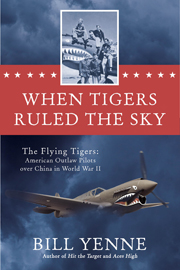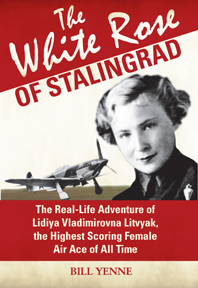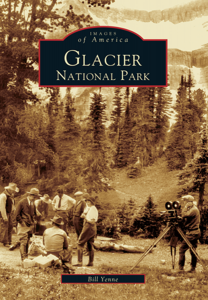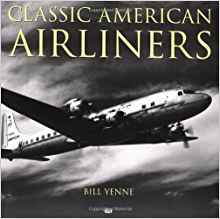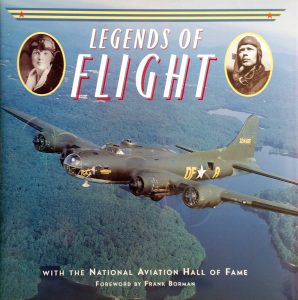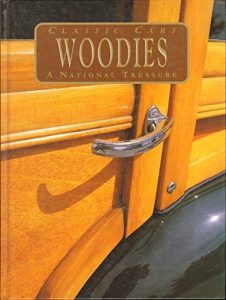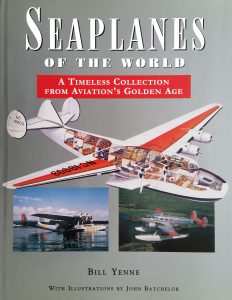BILL YENNE
Author, Historian, Book Producer
Bill Yenne writes “with a cinematic vividness.”
— The Wall Street Journal
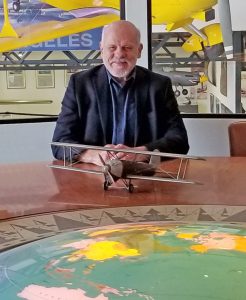
Bill Yenne is the author of more than three dozen non-fiction books, as well as a dozen novels. His work has been selected for Chief of Staff of the Air Force Reading List, and he is the recipient of the Air Force Association’s Gill Robb Wilson Award for the “most outstanding contribution in the field of arts and letters [as an] author whose works have shaped how thousands of Americans understand and appreciate airpower.” (Previous Gill Robb Wilson Awardees include Edward R. Murrow, Ted Koppel, Tom Brokaw and Tom Clancy.)
Aviation historian Colonel Walter Boyne, formerly director of the National Air & Space Museum, complimented Bill Yenne’s “master storytelling,” while Roger McGrath of the Wall Street Journal notes that Mr. Yenne writes “with cinematic vividness.”
Mr. Yenne has contributed to encyclopedias of both world wars, and has appeared in documentaries airing on the History Channel, the National Geographic Channel, C-SPAN, ARD German Television, and NHK Japanese Television. His on-air credits also include his appearance on Mystery Files: Sitting Bull on the Smithsonian Channel, which was filmed at the Little Bighorn Battlefield in Montana. Among his memorable appearances on C-SPAN was a recent discussion of his book Operation Long Jump: Stalin, Roosevelt, Churchill and the Greatest Assassination Plot in History. This lecture can be viewed here.
For more information about Bill Yenne, click on About.
Click on any book cover or title below to get your copy on its way to you now!
The Ones Who Got Away:
Mighty Eighth Airmen on the run in Occupied Europe
“Reads like a suspense novel.” (The Warbird’s Book Club)
“Exhilarating…WWII history buffs will devour this.” (Publishers Weekly)
During World War II, the intrepid airmen of the Mighty Eighth Air Force of the USAAF took the war into the heart of Hitler’s Third Reich. In those terrible battles in the skies over occupied Europe, 50,000 of these airmen were shot down. More than half died and nearly half were captured. BUT, about 3,000 escaped death and evaded capture. These are the stories of the ones who got away!
There are stories of harrowing escapes from the Gestapo, and of men betrayed by their helpers, and of men nearly freezing to death on mountain trails. One man, picked up by pro-Nazi French police faked an appendicitis because it was easier to escape from a hospital than a jail. His plan went sideways, and he woke up without an appendix—and convalescing in a German military hospital. But he got away!
One American was on the verge of being arrested by the Spanish police as a smuggler on a snowswept mountain trail because he had no ID to prove he was an American. Luckily, he thought to show them his pocket comb with “US Army” stamped on it. This worked, and he was allowed to face a horrible blizzard alone, but without fear of prison. Some downed airmen wound up fighting the Germans with the underground. One volunteered to take over operating a clandestine radio for the Belgian underground. Another man found himself as the getaway driver for a band of Resistance bank robbers. But they all got way!
READ BILL YENNE’s ONES WHO GOT AWAY BLOG!
Read the full Publishers Weekly review here!
 America’s Round-Engine Warbirds
America’s Round-Engine Warbirds
With a particular emphasis on the design, development, and evolution of American radial aircraft engines, this work chronicles the progression of US military aircraft from pre-World War II through the transition to the jet engine. Included are powerplants produced by Pratt & Whitney, Curtiss-Wright, Continental, and Lycoming that powered a wide range of aircraft. Aircraft coverage includes trainers, such as the Vultee B-13 Valiant and North American’s T-6 Texan as well as warbirds, such as Boeing’s B-17 and B-29; the Republic P-47 Thunderbolt; Grumman’s F4F Wildcat, Hellcat, and Bearcat series; the North American B-25 Mitchell; the Vought F4U Corsair; the Consolidated B-24 Liberator; and a host of others.
They were America’s Few, this handful of US Marine Corps aviators in the South Pacific in 1942-1943. The term “Few” is borrowed from Winston Churchill’s iconic characterization of the outnumbered fighter pilots of the Royal Air Force who saved Britain from Hitler’s war machine in 1940. The British Few of 1940 and the American Few of 1942 were alike in that they happened to be in the right place at the right time to curb the invincibility of an Axis foe. For the American Few in the fall of 1942, the right place was a small, obscure South Pacific island called Guadalcanal.
Strategically, the stakes were high. For America’s Few, it was stopping the advance of an Axis enemy and a status quo of brutal Japanese imperial rule across Asia that may well have prevailed for generations.
This is not a story of grand strategy. Those have been written, some of them magnificently. These are stories of individual battles, one-on-one battles, battles of the most personal kind. These are the stories of individual lives, the individual lives of a unique group of men.
- Hear Bill Yenne discuss America’s Few with Angus Wallace on his WW2 Podcast on The History Network:
- Hear Bill Yenne on XTENDED, Europe’s Premier Aerospace Internet Radio Programme:
https://aviation-xtended.co.uk/ep-133-americas-few-marine-aces-of-the-south-pacific/
- Check Out Bill Yenne’s America’s Few Blog at Osprey: https://ospreypublishing.com/blog/Americas_Few
Building the B-17 Flying Fortress:
A Detailed Look at Manufacturing Boeing’s Legendary World War II Bomber in Original Photos
Through rare original photos and full manufacturing details, this is the story of building America’s greatest multi-engine combat aircraft of World War II. Contents cover building the Flying Fortress from wingtip to wingtip and from the bombardier’s Perspex nose to the tail-gunner’s twin Browning machine guns.
What sets this book apart from all others in the crowded B-17 field is literally hundreds of factory-original close-up detailed photographs and illustrations accompanied by comprehensive high-resolution reproductions of original Boeing drawings, and all are explained in detailed yet easy to understand descriptive text. This book provides valuable data for the serious Boeing B-17 aficionado as well as a compelling story of America’s aircraft manufacturing prowess for the dedicated aviation enthusiast.
Aces:
True Stories of Victory and Valor in the Skies of World War II
Providing a broad historic panorama and meticulous detail, this is the definitive overview of the aces of World War II. More than 70 aces from 22 countries are profiled in these 240 lavishly illustrated pages. All the greats are here: Bong, Boyington, Foss, Gabreski, Gentile, McCampbell, McGuire, and O’Hare of the USA; Galland, Hartmann, Marseille, and Mölders of Germany; Bader, Johnson and Pattle of the RAF; Anabuki, Nishizawa, and Sakai of Japan; Kozhedub, Pokryshkin and Litvyak of the USSR; Visconti of Italy; Clostermann of France; Skalski and Gladych of Poland; Juutilainen and Wind of Finland; and many, many more!
The Complete Book of US Presidents
The 2021 Edition of Bill Yenne’s classic overview, this book surveys the presidents from George Washington to Donald Trump. Their stories are all included here in 45 detailed, biographical essays about their lives. Lavishly illustrated, including each president’s official White House portrait, sidebars about each and every vice president and First Lady, and interesting anecdotes, this book is accessible to a broad audience and will captivate any history lover.
Mr. Yenne features short, biographical essays about the lives of each of the presidents, jam-packed with unusual details and expounding on the significant roles each commander-in-chief played in the shaping of the United States and its relations with the world.
Scott Mingus of the York Daily Record calls it “a wonderful general overview of each president, the key events of his administration, his opponents in the elections, vice presidents, first ladies, and much more useful information. . . Highly recommended!”
 MacArthur’s Air Force:
MacArthur’s Air Force:
American Airpower over the Pacific and the Far East, 1941–51
General Douglas MacArthur is one of the towering figures of World War II, and indeed of the twentieth century, but his leadership of one of the most powerful air forces in the world is often overlooked. This new history traces the development of “MacArthur’s Air Force” from its origins in the Philippines on the eve of World War II, through to its eventual victory in the skies over Japan, as well as and the key role played by air power under MacArthur’s command in the Korean War.
“A book by Bill Yenne is always a treat, and this one exceeds his own best efforts. I can guarantee that you will be engaged by his master storytelling from his opening words to the very last page of what I consider to be his finest work yet.”
— Col. Walter J. Boyne, USAF (Ret.), combat veteran, aviation historian, and former head of the Smithsonian National Air and Space Museum
 Noe Valley: Past and Present
Noe Valley: Past and Present
A resident of San Francisco’s Noe Valley neighborhood for several decades, Bill Yenne is the author of the popular San Francisco’s Noe Valley. Now he is back with Noe Valley: Past and Present, a collection of more than 80 then-and-now pairings of images from throughout the neighborhood, comparing archival images, some of them more than 100 years old, to color photos taken in the same spot today. Also included is a map section which features a map of the original street grid as laid out by John Meirs Horner in 1863 (with the original street names!), and a map showing how Noe Valley’s streets were paved (or unpaved!) in 1928.
THE BEATLES, The Classic Biography by Bill Yenne
Reissued in Celebration of the 50th Anniversary of the Release of Abbey Road
Bill Yenne’s original 1989 Biography with an expanded, 12,000-word discography, and an all-new 12,600-word Epilogue, covering the past three decades, which was written by the author exclusively for this edition.
From the Introduction: Three decades ago, I wrote of events two decades before. I wrote of an extraordinary body of work created in the span of less than one decade that had survived the test of time. Today, for readers today and for readers two or five decades in the future, I can express with satisfied amazement that this vast and remarkable body of work continues with no lessened vigor to stand the test of time.
The Other Custers
Tom, Boston, Nevin, and Maggie in the Shadow of George Armstrong Custer
Not one, not two, but three Custer brothers died at the Little Bighorn—and so did their only sister’s husband.
Where other Custer literature focuses solely on George Armstrong Custer, this work is the only one to explore the lives of the Custer siblings in depth. War hero Tom Custer earned two Medals of Honor during the Civil War before riding into the West with his brother. There was the bashful and enigmatic Nevin Custer, and the young Boston Custer, whose one desire in life was to share the adventures of his idolized older brothers. Margaret Custer married into the 7th Cavalry and was widowed at twenty-four when her husband, James Calhoun, was among the dead at the Little Bighorn. The Other Custers traces the upbringing of the family and follows Nevin and Margaret as they carried the Custer name beyond Little Bighorn. The book also uncovers much more detail about the ancestors and descendants of the Custer siblings than is to be found in other Custer biographies.
Click here to read the review by Bruce Dettman in Wild West Magazine!

The Complete History of U.S. Cruise Missiles:
From Kettering’s 1920s’ Bug & 1950s’ Snark to Today’s Tomahawk
Celebrating the Centennial of U.S. Cruise Missiles, this book covers the technical development and deployment of the famous winged missiles, such as the Matador, Mace, Snark, Regulus, Navaho and Hound Dog. Having appropriately covered the history and development of cruise missiles, the focus shifts to today’s premier strategic weapon system, the BGM-109 missile that effectively checkmated the Soviet Union and ended the Cold War, and evolved into today’s premier operational unmanned weapon, the Tomahawk. Employing a considerable archival data and material amassed during his extensive research, Bill Yenne has created a compelling work containing a wealth of previously unpublished material.
 Panic on the Pacific
Panic on the Pacific
How America Prepared for a West Coast Invasion
The aftershocks of the December 7, 1941 attack on Pearl Harbor were felt keenly all over America—the war in Europe had hit home. But nowhere was American life more immediately disrupted than on the West Coast, where people lived in certain fear of more Japanese attacks. From that day until the end of the war, a dizzying mix of battle preparedness and rampant paranoia swept the states. Japanese immigrants were herded into internment camps. Factories were camouflaged to look like small towns. The Rose Bowl was moved to North Carolina. Airport runways were so well hidden even American pilots couldn’t find them. There was panic on the Pacific coast: the Japanese were coming.
Bill Yenne has lived in San Francisco, less than five miles from the Pacific Ocean, for the better part of four decades, and has traveled extensively on the highways and coast-hugging byways of the Pacific Coast from Washington’s Olympic Peninsula to the sandy beaches of San Diego County. He has walked the streets of the towns and cities that are the setting for this narrative, and has researched and written about them. He has gazed often at Pacific sunsets, contemplating the events that took place, and might have taken place, here during World War II.
Operation Long Jump
Stalin, Roosevelt, Churchill and the Greatest Assassination Plot in History
In the middle of World War II, Nazi military intelligence discovered a seemingly easy way to win the war for Adolf Hitler. The three heads of the Allied forces—Franklin Roosevelt, Winston Churchill, and Josef Stalin—were planning to meet in Tehran in October, 1943. Under Hitler’s personal direction, the Nazis launched “Operation Long Jump,” an intricate plan to track the Allied leaders in Tehran and assassinate all three men at the same time. “I suppose it would make a pretty good haul if they could get all three of us,” Roosevelt later said. Historian Bill Yenne retells the incredible, globe-spanning story of the most ambitious assassination plot ever thwarted in Operation Long Jump.
When Tigers Ruled the Sky
The Flying Tigers: American Outlaw Pilots over China in World War II
They seemed to materialize out of nowhere at a time when the American people, stunned by the horrible defeat at Pearl Harbor, yearned in vain for news that Americans somewhere in the world were striking back against the Axis. In December 1941, the headlines were filled with grim reports of the backbone of the American fleet at the bottom of Pearl Harbor and an American air force destroyed on the ground in the Philippines. Suddenly, there were reports of American fighter pilots sweeping Japanese bombers from the skies over China. Few in America had heard their name, and the question was asked, who are these Flying Tigers? As with the fighter pilots of the Royal Air Force who had saved the United Kingdom during the Battle of Britain to whom Churchill compared them, the Flying Tigers became a heroic symbol at a historically dark moment. Today, the Flying Tigers remain as probably the best known American fighter aircraft group in history. Their name still resonates in the historical memory of World War II, just as the image of their shark-faced P-40s is an essential icon of American airpower in that conflict.
Watch Bill Yenne’s Lecture on the Tigers at the Marines’ Memorial Association
Read the Review in Leatherneck Magazine
Bill Yenne’s When Tigers Ruled the Sky is also available as an audio book!
San Francisco Beer:
A History of Brewing by the Bay
Foreword by Shaun O’Sullivan, 21st Amendment Brewery
The story of beer in San Francisco is as old as the city itself. San Francisco had its first commercial brewery by 1847, two years before the gold rush, and went on to reign as the major brewing center in the American West through the nineteenth century. From the 1930s to the early 1950s, iconic San Francisco–based breweries Lucky and Acme owned the statewide California market. In the 1960s, Fritz Maytag transformed San Francisco’s tiny and primitive Anchor Brewing into America’s first craft brewery. Now, well into its fourth generation of craft breweries, San Francisco has seen more new breweries open in the second decade of the twenty-first century than were opened in the entire previous century, proving that tech is not San Francisco’s only booming industry. Join local author and beer enthusiast Bill Yenne as he explores San Francisco’s rich tapestry of beers and breweries that have made it a brewing capital in the West.
Drone Strike!
UCAVs and Unmanned Aerial Warfare in the 21st Century
In this book, Bill Yenne picks up the UCAV story where he left off in his 2010 Specialty Press book Birds of Prey: Predators, Reapers and America’s Newest UAVs in Combat. Since that time, both technology and battlefield doctrine have evolved considerably and this book is a new window into that world. It provides a detailed look inside the present and future of robotic aerial warfare systems and technologies. Yenne’s first book on UCAVs covered the period of early development through the end of the 20th Century. Drone Strike! takes you from that time through today’s latest technical wonders, covering such amazing unmanned aircraft capabilities as aerial refueling and landing aboard aircraft carriers even more accurately than manned aircraft. Also profiled are the UCAVs being developed in China, Israel, Iran, India, Turkey, and elsewhere around the world!
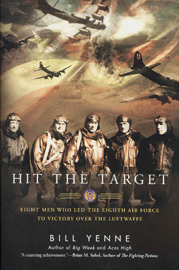 Hit the Target
Hit the Target
Eight Men Who Led The Eighth Air Force to Victory over the Luftwaffe
Unlike numerous books that discuss the history of World War II, in Hit The Target, author Bill Yenne takes the reader on a deeper more personal journey. The history of the Eighth Air Force unfolds amid a clever intertwined series of life scenarios. Uncovered, are the unique lives of eight individuals: Carl “Tooey” Spaatz, Ira Clarence Eaker, James “Jimmy” Doolittle, Curtis Emerson LeMay, Maynard “Snuffy” Smith, Hubert “Hub” Zemke. Robert “Rosie” Rosenthal and Bob Morgan, the pilot of the “Memphis Belle!”
Yenne’s unique approach offers an insight of how eight individuals became great leaders, yet they all evolved from very diverse backgrounds. With varied personalities and skills, the eight heroes windup undergoing a trial by fire during aerial warfare. The reader will be totally immersed in tracking each individual’s outcome, as these individuals become legends of American Military History.
— Erik Simonsen, aviation photographer, author, and veteran aerospace industry communicator
Hit the Target was picked for the Chief of Staff of the Air Force Reading List!
Hit the Target is also available as an audio book
Hap Arnold
The General Who Invented the US Air Force
Bill Yenne’s Hap Arnold takes a complex and wide-ranging subject and makes it a well-written, engaging and compelling read. This book provides the reader with detail and historical context in a solid account of the rise of American airpower and my grandfather’s role at the center of it starting in 1911 and his continuing influence today. Bill Yenne keeps the story moving at a crisp pace and at the same time recounts many of the Arnold Family’s legendary stories. But this book is not just focused on Hap. The author brings others including George Marshall, FDR, Eisenhower, Winston Churchill, Billy Mitchell, Jimmy Doolittle and Donald Douglas into precise focus. This book lays out how US military aviation did not arrive victorious in 1945 by accident or inevitability.
–Robert Arnold, author, winemaker, and the grandson of both Hap Arnold and Donald Douglas.
Bill Yenne discusses Hap Arnold, The General Who Invented the US Air Force, on C-SPAN
Beer: The Ultimate World Tour
This book is addressed to the beer traveler who may be on the ground in a local neighborhood or a foreign land, or in an armchair, relaxing with a selection of beers imported from around the globe, beers which bring to mind fond memories or dreams of future travels. It is both a global survey and a global celebration of beer, designed for people who enjoy beer as well as the cultural nuances of brewing history. Said Fergal Murray, Guinness Master Brewer, “Brilliant! And your writing style is stunning.” Natalie Cilurzo of Russian River Brewing (Creators of Pliny the Younger) adds that “the book is gorgeous.”
 Secret Jets
Secret Jets
A History of the Aircraft Developed At Area 51
(Originally published as Area 51 Black Jets: A History of the Aircraft Developed at Groom Lake, America’s Secret Aviation Base)
Flat-out gorgeous. . . good stuff.
. . . indispensable for anyone with an interest in America’s favorite secret base. — George Knapp, KLAS-TV
Intriguing history.— J. Ford Huffman, Air Force Times
 Bill Yenne has pulled back the curtains of the mysterious Area 51 with the definitive word on what exactly transpired with amazing detail, dry wit, incredible illustration and impeccable research. Truly illuminating.— Daniel Bautz, Grand Dark Conspiracy.
Bill Yenne has pulled back the curtains of the mysterious Area 51 with the definitive word on what exactly transpired with amazing detail, dry wit, incredible illustration and impeccable research. Truly illuminating.— Daniel Bautz, Grand Dark Conspiracy.
Read the Chinese language edition!
The White Rose of Stalingrad
The Real-Life Adventure of Lidiya Vladimirovna Litvyak, the Highest Scoring Female Air Ace of All Time
Bill Yenne scores another victory with his excellent biography of Lidiya Litvyak, the woman fighter ace known as the “White Rose of Stalingrad.” Mr. Yenne’s wonderfully crafted biography takes the reader from the birth of Litvyak, through the last moments of her life and in between tells the story of a heroic warrior who fought with courage, skill and tenacity, becoming the nemesis of the highly vaunted German air machine. — Brian Sobel, author of The Fighting Pattons
A sweet 21-year-old woman fighter pilot who sends a dozen German Messerschmitts down in flame? The White Rose of Stalingrad would be dismissed as utterly impossible–if it weren’t true. Prolific military historian Bill Yenne’s gripping tale of Russia’s unique female fighter pilots makes World War II, and the horrors of life under Stalin come alive like no book I’ve ever read. — Michael Castleman, author of the Ed Rosenberg mystery series
Read the Czech Edition:
Bílá růže ze Stalingradu (Published by Mladá fronta)
Read the Polish Edition:
Biała Róża ze Stalingradu (Published by Vesper)
The Imperial Japanese Army:
The Invincible Years 1941–42
This is the story of an unstoppable army that shocked the world, an army that reigned as the most powerful across half the world. This is the story of the Imperial Japanese Army from late 1941 through 1942. When they embarked upon this war in December 1941, Emperor Hirohito and his generals hoped for success, but they knew this was by no means a sure thing. However, neither they, nor those who would soon oppose them, could have imagined how very successful they were about to be. These would be the invincible years.
Read the Chinese language edition!
 Big Week
Big Week
Six Days That Changed the Course of World War II
Well-written and fast-paced, this will be compelling to specialists and general readers alike. — Kirkus Reviews
It was not so much a turning point as it was a tipping point. As defined by the physicists, a tipping point is a threshold, the point at which an entity is displaced from a position of established balance into a new equilibrium significantly unlike what has existed previously. A tipping point is a moment of critical mass. The threshold was the last week of February 1944. The entity that was about to be displaced from its established balance, was the economy and war making capacity of the Third Reich. The critical mass that was achieved that week was in the number of heavy bombers which comprised the strategic airpower of the USAAF Eighth Air Force. Between February 20 and 25, 1944, the US Army Air Forces began running massive raids against the economic heart of Hitler’s Germany. It was a battle of epic proportions on a three dimensional battlefield. — from the Introduction
Read the Chinese language edition!
Drones at War:
Unmanned Aircraft Become Warplanes
战争中的无人机(火力·无人机)
This is the Chinese language book about Unmanned Combat Air Vehicles that Bill Yenne wrote exclusively for the Chinese market.
Translated by Ding Wenrui, Liu Chunhui, and Li Siyin, it is available only in China, or at this link.
[美] 比尔·耶讷 著
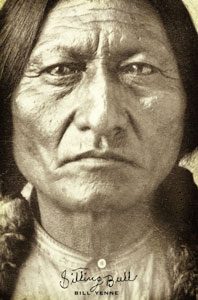 Sitting Bull
Sitting Bull
In a stirring biography, Yenne captures the extraordinary life of Plains Indian leader Sitting Bull [in a] remarkable, tragic portrait. — Publishers Weekly (in a starred review)
This is much more than the usual romantic Native American biography or sympathetic history. Instead, Bill Yenne transcends the customary Eurocentric filter as he delivers culturally-credible insight into the world view of Sitting Bull’s Hunkpapa Lakota. He debunks the myths and romantic distortions, combining thorough literary research with contemporary Native American sources to penetrate the complex and enigmatic character of America’s best-known Indian hero. And he does it all in a refreshing, engaging style.
— Bill Yellowtail (Montana State University, Katz Endowed Chair in Native American Studies)
Listen to the Audiobook of Bill Yenne’s Sitting Bull
Guinness:
The 250 Year Quest for the Perfect Pint
This rich and detailed history of a great Irish beer, brewery and family was recently listed among the year’s top business books by Condé Nast Portfolio Magazine, while the same publication rated the book as its top pick for “Cocktail Conversation.” Says World Business magazine, “This is a thoroughly enjoyable, complete chronicle of a great beer business.”
In calling it a “fine book,” Sam Calagione, owner of Dogfish Head Craft Brewery and author of Brewing Up a Business, adds “Guinness (the beer) is a touchstone for brewers and beer lovers the world over. Guinness (the book) gives beer enthusiasts all the information and education necessary to take beer culture out of the clutches of light lagers and back into the dark ages. Cheers!”
Bill Yenne’s Guinness is also available as an audio book
Read the Chinese language edition!
Aces High
The Heroic Saga of the Two Top-Scoring American Aces of World War II
Mr. Yenne’s dual biography of Dick Bong and Tommy McGuire, the Two Top-Scoring American Aces of World War II, was described by pilot and best-selling author Dan Roam as “the greatest flying story of all time.”
Aces High is also available an an audio book

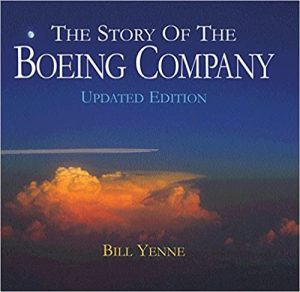 The Story of the Boeing Company
The Story of the Boeing Company
The classic history of Boeing, this exhaustively researched volume covers the growth of the world’s greatest aerospace company, from the wood-and-linen B & W seaplane to today’s revolutionary composite 787 Dreamliner. Lavishly illustrated, the book describes the people and aircraft that made the company’s reputation as planemaker to the world, including the B-17 Flying Fortress, B-29 Superfortress, and B-52 Stratofortress of the war years; the 707 jetliner and 747 jumbo jet that revolutionized commercial flight; and the company’s latest innovative aircraft, including the 737 MAX, 747-8 and 747-8F, 777X, 787 Dreamliner, EA-18G Growler, GPS Block IIF satellite, and more. It also details the conclusion of the Space Shuttle program with a list of all Shuttle missions.
 B-52:
B-52:
The Complete History of the World’s Longest Serving & Best-Known Bomber
The Boeing B-52 Stratofortress is the ultimate embodiment of the principle of strategic air power which has been the cornerstone of American air power doctrine since well before the US Air Force was formed. It looked the part, and it still does. An aircraft whose service life spans five decades across two centuries can be called “unique.” Yet, with the Stratofortress, the long and colorful career chronicled in this book is merely the beginning.
William Shakespeare, in Act 2 of The Tempest, penned the oft repeated phrase “What’s past is prologue,” meaning that the past is merely the prelude to the present and to the future. The story of no aircraft in military history has ever been preceded by a prologue as extraordinary and as interesting as that of the Stratofortress. Its legacy was assured long ago, but so too is its future. — from the Introduction
Read the Chinese language edition!
 Julius Caesar:
Julius Caesar:
Lessons in Leadership from the Great Conqueror
Foreword by General Wesley K. Clark
Yenne is excellent at describing Caesar in battle, mingling tactics and strategy with the smells and sounds of war. — Philip Delves Broughton, The Wall Street Journal
No ancient ruler inspired more legends than Julius Caesar. Under his leadership, Rome conquered territory throughout Europe and the Mediterranean, reaching the North Sea and conducting the first Roman invasion of Great Britain. His tactical acumen and intuitive understanding of how armies work birthed a military structure that allowed Roman generals to expand the boundaries of the empire for generations, and his vision of a unified Europe inspired military leaders for hundreds of years. Bill Yenne charts the major events that shaped Caesar’s leadership, his rise to power, and his crashing fall.
Bill Yenne’s Julius Caesar is also available as an audio book
Alexander the Great:
Lessons from History’s Undefeated General
Foreword by General Wesley K. Clark
When the Oracle of Delphi told Alexander the Great that he was invincible, it was right. Mr. Yenne illuminates the legendary vision of this classical hero. Exhibiting the best traits of a battlefield leader, Alexander was audacious, aggressive, fearless and victorious. His unfailing integration of strategic vision and tactical genius took him to the ends of the earth, and into immortality as a military leader. Alexander’s influence on cultural and political history and the scope of his military prowess remains awe-inspiring to this day.
An excellent survey of Alexander’s exploits and a vivid reminder that the geopolitical landscape hasn’t changed that much over the millennia. — John Negroponte, Former Deputy Secretary of State
Yenne displays his talent for succinctly painting the big picture with a series of fascinating details that make ancient history come alive. Only an author of his experience and capability could render the amazing story of Alexander the Great with such accuracy and feeling. Yenne grabs the reader on page one and doesn’t let go until the end. — Walter Boyne, Former Director, National Air & Space Museum
Bill Yenne’s Alexander the Great is also available as an audio book
Indian Wars
The Campaign for the American West
Dispelling notions that American Indians were simply attempting to stop encroachment on their homelands or that they shared common views on how to approach the Europeans, Bill Yenne explains that these wars, fought for more than five decades across a landscape the size of continental Europe, were infinitely more complex in motivation and strategic conception.
“Splendid. . . .a book that has the rare quality of being both an excellent reference work and a pleasure to read.”— Roger D. McGrath, The Wall Street Journal
Cities of Gold
Legendary Kingdoms, Quixotic Quests, and Fantastic New World Wealth
Bill Yenne takes the reader from the jungles and mountains of Peru, Paraguay, and Venezuela to the deserts and peaks of Mexico and the United States to tell the extraordinary story of how the search for mysterious New World cities fueled the exploration of an unknown hemisphere for hundreds of years. Throughout, the author demonstrates that the insatiable lust for treasure continues to dazzle the modern fortune hunter.
Tommy Gun
How General Thompson’s Submachine Gun Wrote History
Informative history. — Publishers Weekly
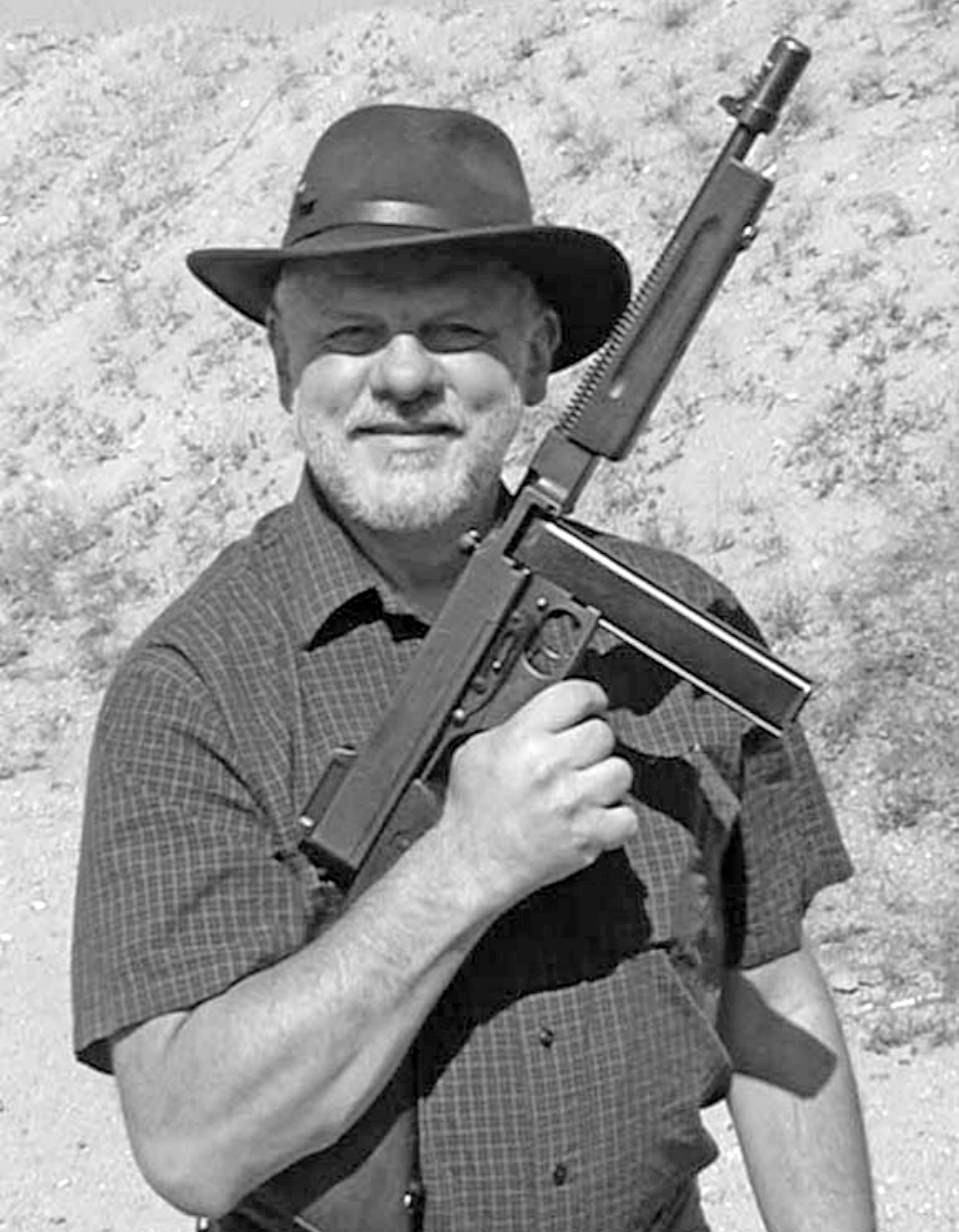
It’s amazing the people you meet while drinking bourbon. While on an American whiskey tour through the distilleries of Kentucky and Tennessee, I happened to encounter San Francisco author Bill Yenne. Our conversation turned to many mutual interests – not the least of which was firearms – and I was pleasantly surprised to learn Yenne had just authored a book on one of my favorite weapons, the Thompson submachine gun. Filled with countless historical tidbits and factual anecdotes, this is a gun book written by someone who… is inherently interested in – and understands – guns. Yenne’s book is a “must read” for anyone even remotely interested in the facts and fables behind General John T. Thompson’s Tommy Gun, or, as the subhead states, “How General Thompson’s Submachine Gun Wrote History.”
— Richard Carleton Hacker, internationally acclaimed author, writing in Shooting Illustrated
Bill Yenne’s Tommy Gun is also available as an audio book
Superfortress: The Boeing B-29 and American Airpower in World War II
with General Curtis E. LeMay
(LeMay commanded the USAAF’s B-29 strike force during World War II, and the US Air Force Strategic Air Command during the Cold War)
Superb. . . an excellent history.— General John Chain, Commanding General, Strategic Air Command
A fine, thorough, yet concise, history of the B-29. Superfortress is an invaluable statement on American airpower, as well as a fascinating history of a remarkable aircraft.— Edward Jablonski, author of Air War
An eloquent tribute to the unity of purpose displayed by a handful of Air Force officers, Boeing executives and engineers and thousands of plant workers across the country.— Publishers Weekly
Superfortress is a very valuable addition to our history of the strategic war against Japan as it was really fought, Here is the straight stuff.— Major General Haywood Hansell, Jr., Commanding General, XXI Bomber Command
 Rising Sons
Rising Sons
The Japanese American GIs Who Fought for the United States in World War II
Mr. Yenne recounts the incredible stories of the Japanese-American soldiers who faced down discrimination to serve their country, who fought so bravely in World War II, men who were willing to lay down their lives for a country they were uncertain would ever accept them again. Their courageous actions proved that they, too, were true members of America’s Greatest Generation.
Bill Yenne’s Rising Sons is also available as an audio book
Building Big Iron
The Epic History of Locomotive Building in the United States from 1830 to the Present
This is the story of an industry that arrived in the United States at almost the very moment the Industrial Revolution began to touch American shores, and which remains a powerful part of the ongoing America’s industrial heritage and modern industrial infrastructure.
This is the story of myriad companies and factories where the locomotives were built. This is the story of hardworking men with calluses on their gnarled hands and grease under their nails. It is also the story of men who sat in head offices and peered out across vast manufacturing operations.
The 377 Stratocruiser & KC-97 Stratofreighter
Boeing’s Great Post War Transports
What happens when a Seattle planemaker takes the most advanced, longest-ranged, highest flying super bomber of World War II (the B-29 Superfortress) and adapts it as the longest-ranged, highest flying transport of the immediate postwar world? The result was Boeing’s Model 367, originally conceived as a long-range transport that would have had a role in World War II if the campaign had gone longer, but which was adapted for the commercial market as the Model 377 Stratocruiser. It was the first commercial passenger plane that could provide non-stop Transatlantic service.
And then there was the Cold War. To counter the Soviet nuclear threat, the Strategic Air Command (SAC) initiated an unprecedented build-up of jet bombers. Because these lacked global range, SAC also required an exceptional build-up of aerial refueling aircraft. The Model 367 became the KC-97, the first dedicated aerial refueling aircraft to be fielded in significant numbers, as 888 were built. As the family grew long in the tooth, yet another career awaited. Several of the original airframes were rebuilt as the inimitable “Guppies,” the largest volume transports ever conceived. Working for NASA, they are credited with having made America’s victory in the Space Race possible. This book tells and how service continued around the world, in the second decade of the twenty-first century, one of the Guppies is still flying routine missions for NASA.
US Guided Missiles
The Definitive Reference Guide
Until now, there has never been a comprehensive number-by-number encyclopedic directory of every single U.S. guided missile system ever built. This book covers the exotic winged cruise missiles of the Cold War, the air-to-air and air-to-ground weapons used in Vietnam and Desert Storm, Navy air-defense interceptor missiles, all the ICBMs, plus secret projects and little known types that will intrigue any military history buff. Missiles include the MGM-1 through the MQM-175.
US Guided Missiles is a truly authentic reference guide, featuring a solid compilation of US missile data and specifications. Yenne has managed to clearly explain the development history of critical US missile systems, and also assemble the pertinent data in an understandable manner… US Guided Missiles is a must-read for historians, missile aficionados, aerospace collectors and as a valuable data source for military personnel.
— Erik Simonsen, aviation photographer, author, and veteran aerospace industry communicator
Read the Chinese language edition!
Convair Deltas: From SeaDart to Hustler
This book tells the compelling story of America’s aerospace industry in its heyday, when manufacturers boldly took the initiative to explore futuristic new designs by actually building and test flying airplanes to determine how well they would work, if at all. Convair led the way in this area with America’s only complete family of delta-wing aircraft that included America’s first delta-wing jet, the one-of-a-kind XF-92 experimental prototype, the XF2Y-1 jet-powered seaplane, the XFY-1 Pogo turboprop vertical takeoff and landing fighter, the F-102 Delta Dagger and F-106 Delta Dart supersonic missile-firing interceptors, and the revolutionary record-breaking four-engine B-58 Hustler – the world’s first Mach 2 strategic bomber. Noted aviation author Bill Yenne thoroughly documents Convair’s quest to conquer the aerodynamic mysteries of the delta wing with stories of the dramatic struggles and technological breakthroughs that gave the world some of its greatest fighter and bomber aircraft.
Going-to-the-Sun Road
This the second of Bill Yenne’s tributes to Glacier National Park, where he grew up. His home was just a few blocks from the grandest alpine highway in the United States, and has traveled it hundreds of times. The Going-to-the-Sun Road passed through a landscape of peerless beauty, but the road itself is an engineering masterpiece. In 1910, Glacier National Park was created in that million-acre swath of mountains, lakes, and glaciers that the great naturalist George Bird Grinnell called “the Crown of the Continent.” Soon, plans were being made for a road that would take visitors into the heart of this amazing place. The result was the Going-to-the-Sun Road, which has been the centerpiece of the visitor experience in Glacier since it was formally dedicated in 1933.
Glacier National Park
Bill Yenne grew up within this majestic million acres of towering mountains, ancient glaciers, and amazing biodiversity. Located astride both the Continental Divide and Hudson Bay Divide, Glacier contains Triple Divide Peak, the only point in North America from which the waters drain into three oceans. The land that George Bird Grinnell called the “Crown of the Continent” and that John Muir described as “the best care-killing scenery on the continent” has been delighting visitors since well before it was set aside as a park in 1910. Through the years, countless people have come to Glacier to hike its nearly thousand miles of trails, marvel at its unrivaled scenery, and drive the Going-to-the-Sun Road, America’s most spectacular alpine highway. Glacier is also home to remote mountain chalets and magnificent grand lodges. While most national parks have a singular signature lodge, Glacier has three. This is Yenne’s tribute to the land whose mountains and lakes are etched upon his memory.
Birds of Prey:
Predators, Reapers and America’s Newest UAVs in Combat
In this book, Bill Yenne covers the history and development of early-unmanned aerial vehicles, but the focus is on all the latest impressive technology used in today’s most modern remotely piloted combat aircraft.
Although primitive unmanned TV-guided airplanes were used in combat during World War II, it is only recently that these machines have matured into the most significant new method of aerial combat since the beginning of contemporary warfare. The fact that onboard human pilots are no longer needed for these aircraft to carry out their deadly missions is fascinating for military enthusiasts and aviation historians alike. These remotely piloted vehicles are now re-writing the book on modern aerial surveillance and close air support. Delivering their lethal payloads with surgical precision, propeller-driven and jet-powered remotely piloted aircraft are guided by satellite, and flown by human operators located halfway around the world in air-conditioned trailers, isolated from the hostile combat environment of the aircraft themselves. While this book also covers the history and development of early-unmanned aerial vehicles, the focus is on all the latest impressive technology used in today’s most modern remotely piloted combat aircraft.
San Francisco’s Noe Valley
This book is Bill Yenne’s tribute to the San Francisco neighborhood where he and his wife, Carol, raised their children, and where they continue to make their home. This remarkable neighborhood, widely known and beloved as the “Village within the City,” was named for Jose de Jesus Noe, San Francisco’s last Mexican alcalde. Noe Valley is undoubtedly one of San Francisco’s favorite neighborhoods and certainly one of the most picturesque. Yet the area has a rich and varied history reaching far beyond the lovely buildings and lively street scenes familiar to so many city-dwellers. Originally part of the Rancho de San Miguel land grant, the area was incorporated into the city and became an early example of a San Francisco enclave situated away from the noise and bustle of the downtown and waterfront areas. Noe Valley gradually became an important residential and business center known for its beautifully restored Victorian homes, as well as for the vibrant commercial corridor on Twenty-fourth Street.
The American Aircraft Factory in World War II
Few industrial phenomena have been as dramatic as the United States mid-20th-century shift from peacetime to wartime production. This book documents the production of legendary warbirds by companies like Boeing, North American, Curtiss, Consolidated, Douglas, Grumman, and Lockheed. It was a production unmatched by any other country and a crucial part of why the allies won the war. Author Bill Yenne considers the prewar governmental acts that got the plants rolling, as well as the gender shift that occurred as women entered the work force like never before. He also describes the construction of megafactories like Willow Run, factory design considerations, and the postwar conversion back to peacetime production. Illustrated with 175 period photographs including 50 rare color photos never before seen in print.
“The American Aircraft Factory in World War II by Bill Yenne is truly magnificent. When I first had the book in my hand I thought “coffee table book”. After reading the book and looking at the pictures it is so much more. It is a wonderful tribute to the men and women who built the airplanes. It is an excellent history of the aircraft industry in the Unites States….The photographs in the book are amazing. I have never seen so many high quality photographs of this era in one collection. Without the pictures the book is a wonderful history of the aircraft industry. With the pictures it is transformed into a work of art. I highly recommend the book for all aviation and World War II buffs. It would be an excellent addition to community and public school libraries as well. This is a masterpiece that will stand the test of time.”
—Kepler’s Military History Book Review
“Yenne pays fitting tribute to the cultural, military and social influence that American planes had on the American way of life during the Second World War. Readers will find it difficult not to become fans of military aviation history and of the men and women who gave us that history on the factory floors of America and in the skies over Europe and the Pacific Rim.” —BiblioBuffet
View the excerpt from this book that appeared in Smithsonian Air & Space magazine
The Missions of California
Bill Yenne’s classic study of the missions, with his beautiful, full-color photography. California’s 21 missions are moving historical reminders of the early history of the state. From 1769 to 1823, Franciscan missionaries founded missions from San Diego to Sonoma, all of which can still be visited today. From the story of Father Junipero Serra’s tortuous journey to establish the first mission in San Diego to the well-known legend of the swallows of San Juan Capistrano, here are the unique histories of the jewels of El Camino Real. This beautiful photographic celebration of Spain’s religious contribution to the Golden State features both historic and modern photographs with interior and exterior images of the gardens, grounds, and various mission complex buildings.
On the Trail of Lewis and Clark
Yesterday and Today
In the Bicentennial year of the start of the Lewis and Clark Expedition, Bill Yenne set out to follow the entire outbound route of the Corps of Discovery. Beginning at Wood River, Illinois, where Clark spent his first winter, Yenne crossed the Mississippi to St. Charles, Missouri and headed west. Three weeks, 11 states and more than 3,000 miles later, he stood at the mouth of the Columbia River, where Lewis and Clark had stood. This book, and the more than 300 color photographs within in it are the fruits of Yenne’s own expedition. During it, during he stood where they camped, where they built their forts for their two winters afield, and he followed all the milestones of their epic trek across America from 1804 to 1806. He offers an unprecedented examination of the trail both as the explorers saw it and as it exists today. He draws on the explorers’ journals and period illustrations for historical context, and he complements this material with modern color photography from the roads and rivers along the trail blazed by Lewis and Clark. Yenne was a featured participant in the great “Clark on the Yellowstone” National Signature Event held at Pompey’s Pillar National Monument in Montana in 2006.
“Wow. Bill Yenne’s sumptuous coffee-table book On the Trail of Lewis and Clark: Yesterday and Today is a gorgeous sample of historical eye candy. This is a book to hang onto, display and repeatedly peruse.”
— Walla Walla Union-Bulletin
Check out the review in Montana’s Missoulian
Hitler’s Master of the Dark Arts
Himmler’s Black Knights and the Occult Origins of the SS
“Himmler seemed like a man from another planet.”
— General Heinz Guderian (Chief of Staff of the German Army)
From its swastika, an ancient runic symbol, to its obsessive devotion to a single person and ideal, the doctrine of Nazism was deeply rooted in ancient spiritual beliefs. As Yenne describes in this book, the mystical dogma had been forming in the late nineteenth and early twentieth centuries from a swirling mass of ideas, concepts and metaphysical currents that were flowing through Europe in those days. At the heart of the evil of Nazism was Hitler’s witch doctor, Heinrich Himmler, the high priest of the dreaded SS. Their threatening double lightning bolt is perhaps the most dreaded symbol of the Third Reich. The facts of the SS’s origins are truly stranger than fiction. Even today, the image of an SS storm trooper in full regalia causes chills. Hitler was the charismatic madman who brought Nazism to power. Himmler was the ruthless figure in the shadows, the man who took the philosophies that were at the roots of Nazism and methodically shaped and codified them. If you thought Raiders of the Lost Ark was an inspired Hollywood fiction, think again. Hitler’s Master of the Dark Arts reveals the hidden truths of the SS in full and riveting detail.
Read the French language edition:
Himmler et l’Ordre Noir: Les origines occultes de la SS (published by Camion Blanc)
Great American Beers
Twelve Brands That Became Icons by Bill Yenne
This book celebrates 12 of the most iconic regional brands of the 2oth century. Each chapter is devoted to the history, players, advertising, breweries, and, of course, the product associated with each brewer. All regions of the United States, as well as Canada, are represented. Brands include Acme, Ballantine, Falstaff, Hamm’s, Lone Star, Lucky Lager, Miller, Olympia, Pabst, Rainier, Rheingold, and Schlitz. Archival photography, period advertising, and other breweriana have been sourced from some top collections in the country, illustrating how each brand survived and thrived despite such external factors as wars, Prohibition, and tax hikes, and the ultimate fate of each is explained.
The American Brewery
From Colonial Evolution to Microbrew Revolution
Here’s another beautiful showcase of brewing history from Bill Yenne. This lavishly designed history tells the story of American brewing from early brewers George Washington and Thomas Jefferson, through Prohibition, consolidation, depression, recession, and the microbrewery boom that revived the industry beginning in the 1980s. Archival and modern imagery and photographs depict buildings inside and out, workers, the production process, and equipment. In addition, sidebars feature memorabilia, home brewing, and famous recipes from the pilgrims to present.
Atlas of North American Railroads
At its peak, the North American railroad industry comprised more than 100 roads. The classic system maps produced by the railroads of the day, collected for the first time in this volume, offer a sweeping view of the industry’s remarkable reach from the early days, through the period of the industry’s greatest power, to the present. Each railroad’s routes unfold in multi-page spreads featuring a capsule history, vital specs such as track mileage and years of operation, and period photographs, all detailing the rich history of the railroads of Canada and the United States.
Santa Fe Chiefs
Like lightning flashing across the desert sky, the Chief streaks by, resplendent in its “warbonnet” livery. This splendid illustrated history of the Santa Fe Railroad’s flagship passenger trains carries readers back to an era of luxury travel on America’s rails when movie stars and moguls booked their places on the Chief for the 40-hour trip from Chicago to Los Angeles faster even than Amtrak’s Southwest Chief today. The story of America’s most celebrated passenger train, the nation’s first diesel-powered streamliner from its first run in 1936 to its takeover by Amtrak in 1971 also includes coverage of the Santa Fe’s other Chiefs, including the Texas and San Francisco.
“Yenne takes us back in time to trace the origins of the Chiefs, describe their heyday, and examine their remnants under Amtrak. It’s a poignant trip that makes us yearn for yesteryear.” —Trains
“It’s one of those rare books that can spark a lifetime of interest in railroads. It’s also a worthy addition to any passenger train modeler’s bookshelf, especially fans of western railroading during the glory era. Not strictly a history, not strictly a photo book, Santa Fe Chiefs, combines the best of both genres with excellent layout and printing quality … It’s a great book for yourself, or for the budding railfan in your life.” —O Scale Trains Magazine
Great Northern Empire Builder
Named for renowned entrepreneur James J. Hill, founder of the Great Northern Railway, the incomparable Empire Builder was launched in 1929 by legendary CEO Ralph Budd. Powered by steam until 1947, the Empire Builder charged into the diesel era at full-bore with streamlined EMD E7As trailing Pullman cars from St. Paul to Spokane and generating millions for the railroad. This authoritative and richly illustrated history covers the Empire Builders through their 1970s demise. Included here are the trains, their various forms of motive power and rolling stock, and their services. A wealth of black and white archival images and period color photography depict the Empire Builders along one of the nation’s most scenic routes. Also shown are uniforms, dinnerware, terminals and stations, interior views of Pullman and dome cars, period advertisements, and route maps.
Classic American Airliners
Rapid developments in aviation technology from the period immediately following World War II to the early 1970s brought high-speed air travel to the public and, in the process, seriously reduced the size of the world. This history of the American airliner’s embryonic years bridges the propliner era, famous for classic aluminum aircraft like the elegant Lockheed Constellation and Douglas DC-6, with the dawn of early jetliners like the DC-8, Boeing 707 and Convair 880. A combination of modern and period photography transports readers back to this heady era, helping to detail the evolution of American airliners and the days of luxury air travel. Each of these pioneering aircraft is depicted in a variety of liveries representing American airlines of the time.
San Francisco Then and Now
This is Bill Yenne’s classic, best-selling book on the City-by-the-Bay that Amazon’s Listmania rated as the top book about San Francisco. There’s no denying the charm of San Francisco, a city perched on rolling hills, where “little cable cars climb half-way to the stars.” With dramatic vistas at every turn, the Pacific Ocean to the West and Bay to the East, its geography and cityscape is like no other place on Earth. This unique book features a selection of dramatic photos taken before, during, and after the 1906 Earthquake and fire. Filled with amazing then-and-now photographs of the City’s notable attractions, including cable cars, the Ferry Building, Palace of Fine Arts, Transamerica Pyramid, and Mission Dolores, the oldest building in SF. See the Golden Gate Bridge during construction in 1934, and how it looks today. Much heralded and even nefariously pirated, this is the pictorial book about the city. Accept no substitutes.
Legends of Flight
With the National Aviation Hall of Fame, and with an Introduction by Gemini 7/Apollo 8 astronaut Frank Borman
In this book, Bill Yenne dons his aviation historian’s hat to tell the complete story of American aviation in the 20th century, from the Wright brothers to Charles Lindbergh to Amelia Earhart, through the war years to the classic era of space flight. The book profiles dozens of aircraft and spacecraft, as well as the personalities who designed, built, flew and set records in them.
Gothic Gargoyles
As the sun sets over the great cities of Europe, the strange and mysterious gargoyles come into their hour. They sit as they have since the Middle Ages, peering down anonymously at the sleeping European cities. Art historian John Stocking once said that a Northern Gothic cathedral is like a cave-rich in stalagmites and stalactites-turned inside out. Gothic Gargoyles examines the little-known and little-under- stood creatures that inhabit those caves turned inside out, as well as the anonymous craftsmen who created them. Gothic Gargoyles is the ultimate book of gargoyles-the largest full-color collection of gargoyle images ever published. It is filled with 200 original photographs of Medieval gargoyles from throughout Europe, including Notre Dame in Paris and London’s Westminster Hall, as well as cathedrals and public buildings in cities such as Rouen, Chartres, Brussels, Brugge, Mons, Cologne, and ‘sHertogenbosch in the Netherlands (where Hieronymus Bosch was inspired by, and possibly lent a hand to-the gargoyle sculptors). This volume also includes important nineteenth-century Gothic Revival gargoyles perched on buildings in Europe, and in United States cities from New York to San Francisco.
Woodies
A National Treasure
Woodies have been called THE collectors’ car of the 1990s. Their magnificent styling and lush wood detailing have made them rolling works of art, indeed, rolling masterpieces. Woodies have their roots in the classic coach-making tradition that extends back into the eighteenth century, and wood-framed and wood-paneled automobiles have been built as long as automobiles have been built. However, the classic era of the American woodie was in the 1930s and 1940s. Ford, Chrysler and General Motors all produced variations on the theme, and these became an integral part of the American lifestyle, first as a comfortable family car and then as the car of choice for surfers and beach-goers. This album begins with the woodies of the 1920s and includes the custom machines of today, while featuring the great woodies of the classic era. Today, a rapidly-growing woodie revival is putting more of these great machines on the street and in the public eye. This book is generously illustrated with over 175 carefully selected images, most in full color and many specially photographed by Bill Yenne himself for this edition. The photographs include many archival photographs that have not been seen in half a century, as well as contemporary color images of stock and restored woodies, with a special emphasis on close-ups and details. These are complemented by authoritative descriptive text.
Seaplanes of the World
A Timeless Collection from Aviation’s Golden Age
Seaplanes hold a special place in our memory of the wonderful air- craft of aviation’s golden age. Streamlined by necessity, they were magnificent and beautiful machines that caught and held the eye and the imagination. In this magnificent album, aviation historian Bill Yenne has assembled a marvelous collection of photographs of the great Supermarine racers, the Pan American Clippers that pioneered the air routes across the Atlantic and Pacific, the fighting flying boats of World War II, and the post-war jet seaplanes. This book is illustrated with carefully selected color and black and white photographs from the world’s most important aviation historical archives. These are complemented by authoritative descriptive text and over a dozen exquisite cutaway paintings by John Batchelor, the dean of the world’s technical aviation illustrators.
“A great value for a book with so much history and coverage.”
—American Aviation Historical Society Journal
Into the Sunset: The Convair Story
One of America’s greatest planemakers, Convair was formed by the 1943 merger of Consolidated Aircraft and Vultee Aircraft. In 1953 it became a division of the General Dynamics Corporation. Convair was famous for producing such legendary military aircraft as the PBY Catalina, the B-24 Liberator, the B-36 Peacemaker, the F-102 Delta Dagger, the F-106 Delta Dart, and the B-58 Hustler, as well as a series of airliners culminating in the model 880 and 990 jetliners. When General Dynamics decided to dissolve its Convair Division after nearly half a century, Bill Yenne was brought in to work with Convair General Manager Art Veitch to document its history for a deluxe presentation book. Given unprecedented access to the Convair files and archives, Yenne created a unique work with a depth of detail not otherwise possible.
Black ’41
The West Point Class of 1941 and the American Triumph in World War II
Foreword by Michael J. L. Greene (West Point ’41)
Originally published to coincide with the fiftieth anniversary, Black ’41 has recently been re-released. It opens with the arrival of the class of 1941 at the gates of West Point in the spring of 1937. It follows that class—nicknamed “Black ’41” for their misdeeds while at the Academy—over the course of the next four years, as they absorb the lessons that will help them become military leaders. Their cadet days provide the backdrop for the ominous events in a world headed toward war.
It would be a war, as Secretary of War Henry L. Stimson underscored in his commencement address to the class in June 1941, that “may fall, in large measure, upon your shoulders.” The U.S. Army into which those new graduating second lieutenants were commissioned in 1941 was in many ways a holdover from the army of an earlier era, with plenty of cavalry but without a single armored division. Black ’41 became a key part of the new army, quickly transitioning to a mechanized force and growing its air arm. By the time of the major Pacific and European action, Black ’41’s officers were captains and majors, and leading soldiers into some of the critical fighting in the war.
Told largely through the words of the graduates, Black ’41 is the coming-of-age story of West Point’s finest, during the hour of our country’s greatest need.
“A valuable portrait of a part of the evolution of the U.S. Army over the last half-century.”—Booklist
“Military writer Yenne interviewed 60 members of the last West Point class to graduate before the attack on Pearl Harbor and follows their lives through the far-flung conflict that ensued. The personal tales of these new officers are intertwined and gradually lead the reader through the entire war. . . . The result is an easily read and anecdotal work for the general public.”—Library Journal
Operation Cobra and the Great Offensive
Sixty Days That Changed the Course of World War II
Shortly after the D-Day invasion, the Allied forces in Europe had stalled. A limited operation was set in motion to punch a small hole in the enemy defenses, starting on July 25, 1944. It was called Operation Cobra, and it would become one of the greatest offensives in all of military history.
In the sixty days following the launch of the operation, the Allies — commanded by Dwight Eisenhower and led by men such as the irascible General George Patton and General Omar Bradley — attacked the enemy relentlessly. And what began as a desperate attempt to break a stalemate turned into an unstoppable armored juggernaut that swept the Germans out of virtually all of France, Belgium, and Luxembourg. Here is a penetrating account of that incredible feat of military skill, bravery, and daring that changed the course of the war, and signaled the end of Germany’s domination of Europe.
Bill Yenne’s Operation Cobra is also available as an audio book









